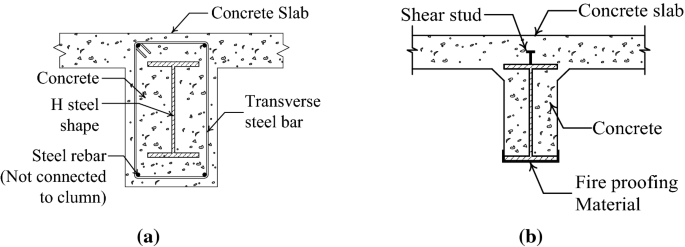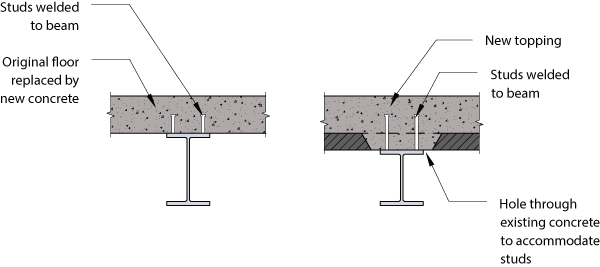Web Crushing Steel Beam

The reinforced concrete beam in section 3 5 2 1 and fig.
Web crushing steel beam. 5 6 1 hinge approach with full depth steel plates in sagging region of beam. Web bearing and buckling are modes of failure that arise from concentrated forces being transversely applied onto the flanges of beams or columns. 9 2 parallel flange channels. The two equations are needed to account for the difference.
The bearing plate is necessary to avoid crushing of the weaker material and to distribute the reaction force over a sufficient length of beam to prevent web yielding or crippling. In this case r n is the nominal web crippling strength of the member is computed using scm equations j10 4 and j10 5. Web 2 local crushing of web 3 buckling of thin flanges. The variable n in the 2005 specification has been replaced with l b in the 2010 specification the values of r u and r a are the lrfd and asd factored loads respectively applied to the beam.
Bearing buckling and shear capacities for unstiffened webs. Web crushing failure in beams is a brittle failure mode as it typically occurs suddenly without warning. Esdep european steel design education programme these are not my videos i found the cd s somewhere and uploaded them for everyones use. In order to ensure ductile shear behaviour shear strength is limited by the maximum strut capacity equation web crushing equation to prevent the crushing of concrete before the yielding of shear reinforcement.
Since none of the rolled sections have d t 70e there is no need to check for shear buckling of the web. 3 41 has already been strengthened in the sagging region with 3 mm thick steel plates over the full depth of the web. Web bearing failure means that the web yields at its most vulnerable location close to the root radius adjacent to the flange where the force is applied as illustrated in figure 1 a. Civil engineering study 81 2 structural series web crippling and combined web crippling and bending of steel decks by wei wen yu.
A bearing plate is generally a rectangular plate that can described by its dimensions as shown in figure 8 6 4 1 1. This is a problem only when very wide flanges are employed. The nominal cross section dimensions of parallel flange channels give a square heel but the tolerances include a small heel radius see corus brochure structural sections 11 based on bs. Shear yield can only occur in very short spans and suitable web stiffeners will have to be designed.
Suitable stiffeners can be designed.













































